Hansgrohe!
If you’re one of the sheltered few (perhaps I should say, sadly, the sheltered “many”) U.S. citizens who’ve never traveled abroad, then there’s probably a thing or two you should know about Europeans’ notions of what I’ll simply call the “bathroom arts”: 1. Toilet suction is not quite what it is here in the good old U.S.A.; 2. The Bidet is much cherished; 3. What we know as the “showerhead” is most often a detachable sprayer.
A quick processing of the facts therein might lead a reasonable person to conclude that Europeans eschew the tendency of the U.S. citizen to deny some bodily truths-namely, that an inverted stream is a more efficacious hygiene tool for certain of the bodily cavities than, say, a crumpled ball of industrial strength paper. Suffice it to remark that perhaps we could learn a thing or two from the bidet, from the detachable sprayer.

Axor Citerio. Manufactured by Hansgrohe.
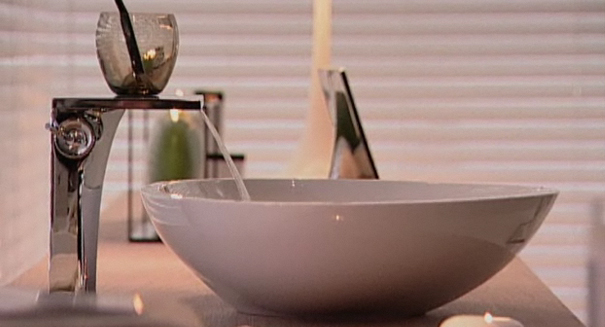
Axor Massaud. Manufactured by Hansgrohe.
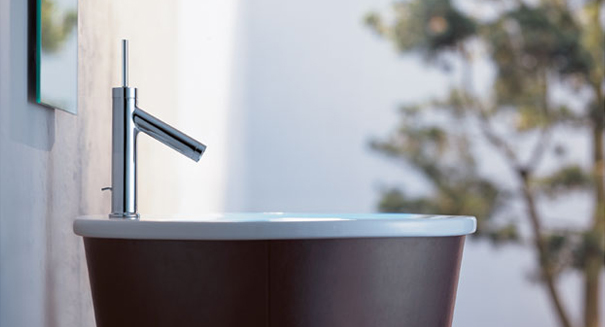
Axor Starck. Manufactured by Hansgrohe.
We could also be much edified by familiarizing ourselves with some of the innovations offered by Hansgrohe, developer and manufacturer of products in “sanitation technology” since 1901. Hansgrohe comes to us courtesy of one Mr. Hans Grohe, whose acheivements in sanitation are in part owed to the Schiltach region of Germany’s Black Forest, famed for its 11th. Century mills that were early successes in harnessing the power of water: “maybe it is because of the accuracy, craftsmanship and meticulous working style which is characteristic of the Black Forest, or because of its passion for water-the elixir of life-that Hansgrohe developed into an internationally renowned company.” A short list of the reasons for the reknown include 1968’s “Selecta” (the first adjustable hand sprayer), 1974’s “Tribel” (first hand sprayer with multiple spray modes), and on to 2007’s “Rainfall” (first wall-mounted overhead shower with “waterfall” spray).
But Hansgrohe’s contributions go beyond showerheads: “Airpower” is the company’s patented tecnology that infuses air into each molecule of water, resulting in “drops that coat the skin rather than bouncing off of it; water savings without sacrificing performance; and larger, more voluminous drops.” Spray channels of silicone repel limescale, meaning that nozzles remain unclogged and performance (and appearance) is much improved. And the “Eco-Right” quality control program emphasizes green and energy-saving features like low-flow fixtures, electronic/metered faucets, and gray water systems.
“Wonderful,” I can hear you grumbling in your mind’s voice, “but do their products look like the stuff in their ‘water-bath-design museum‘? Or like something we can use?” The answer is the latter, I’ll avow. Hansgrohe embraces the notion that a bathroom is a lived-in space, rather than merely a functional, ahem, repository. Their Axor brand collections are products of some of the world’s best designers. So choose from Axor Citerio, which evokes a Japanese minimalism that celebrates the bath as a ritualistic space; Axor Massaud, which acknowledges “the symbiosis between man, nature, and space” by underplaying the technology with form, light, and shadow in a way that reminds us how water moves in nature; and Axor Starck, which takes an elemental approach in divesting the bath-space of superfluous decoration, thus emphasizing it as a place of relaxation and renewal.
No one can argue with that. As Jean-Marie has said, “I have a vision of complete harmony between man, nature and technology. In order to fulfill this harmony, the bathroom must become a living space, a space where we feel good.” While I’m probably a bit too cynical to believe that a good bathroom helps establish the vaunted harmony alluded to above, I’ll take part two of the quote to heart. Hansgrohe’s beautiful and functional fixtures should make us all feel just a wee bit better.
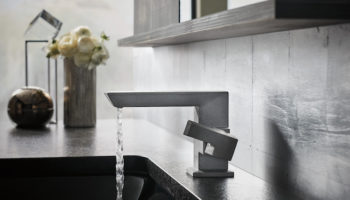
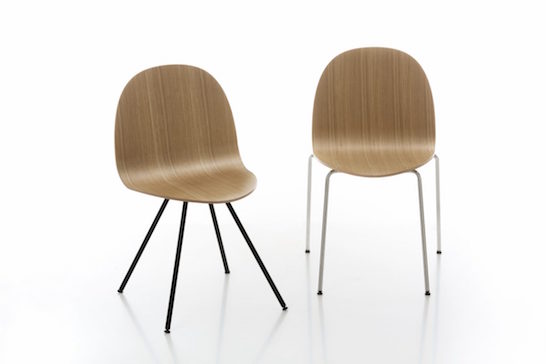
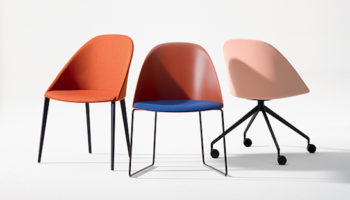

Leave a Reply